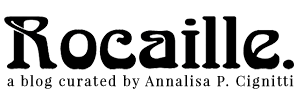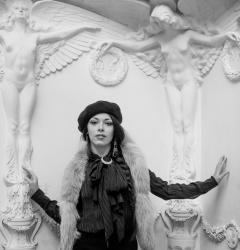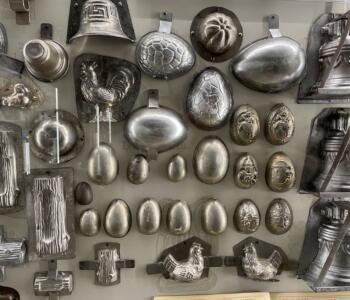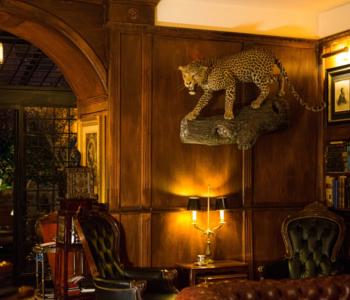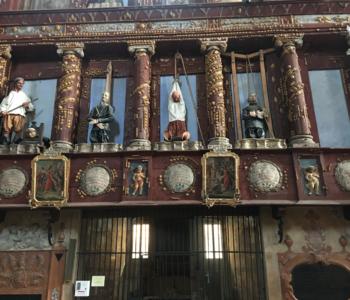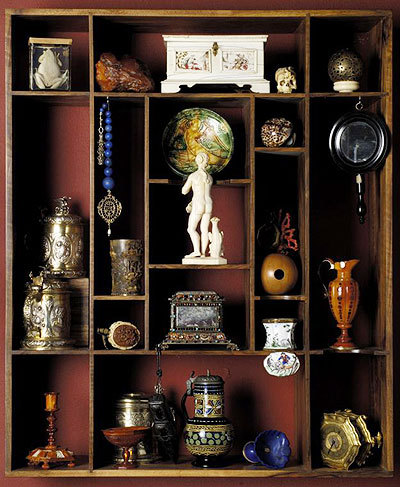
Georg Laue is a very passionate collector and art historian, specialized in amber, who has been always fascinated by Renaissance Kunstkammer and Wunderkammer, since he was working with his father’s antiques business.
In 1997 he decided to open his own Kunstkammer, right in the centre of Munich, near the old and new Pinakothek.
The room where the collection is hosted was designed in 1873 by Blersch, the Royal Bavarian Court Stucco Master, and it has a frescoed ceiling supported by columns.
This deal perfectly with Georg’s aim: he want his kunstkammer to be not only an antique shop, but a real museum.
Infact Georg is not only an antique dealer, but also a real lover of these objects. He is concerned about the didactic aspect: he want to communicate Renaissance art, literature, philosophy and music and encourage people to learn about them.
“I’d like to make a new generation of young collectors… I believe that it is especially important for the new generation of young collectors not only to lose their inhibitions but also to bridge the historical distance to the objects.”
Today he also gives information as well as estimations on art objects and since 1999 he’s publishing his own series of catalogue books that deal with various aspects of Kunst and Wunderkammer.
review for atlasobscura
sources: kunstkammer.com; mecollector; artkey.com, artenet.com
 A set of Renaissance coral cutlery, Venetian-Dalmatian, ca 1600
A set of Renaissance coral cutlery, Venetian-Dalmatian, ca 1600
 Wedding cutlery set in its fish-shaped case, French, ca 1550. Bone, ivory, iron
Wedding cutlery set in its fish-shaped case, French, ca 1550. Bone, ivory, iron
 A magnificent set of surgical instruments, German, ca 1600. Ivory, silver fire-gilt, iron.
A magnificent set of surgical instruments, German, ca 1600. Ivory, silver fire-gilt, iron.
 An Indo-Portuguese casket, Goa, ca 1650, silver filigree, partly fire-gilt.
An Indo-Portuguese casket, Goa, ca 1650, silver filigree, partly fire-gilt.
Michel Redlin, Large Table Casket ca. 1680
 South German Renaissance shell spoon, ca 1600, in shell, fire gilt and silver.
South German Renaissance shell spoon, ca 1600, in shell, fire gilt and silver.




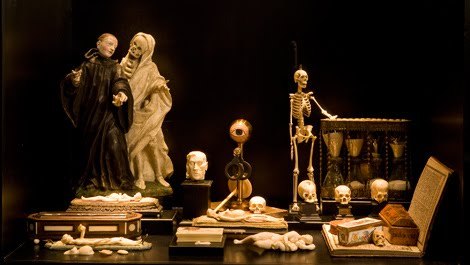




Stephan Zick (1639-1715) Anatomical teaching model of a pregnant woman (Nuremberg, around 1680)

Selection of courtly caskets (south German, Ausburg or Nuremberg, 1570-1650)

Cabinet with animal representations (Tyrol, probably Innsbruck, ca 1600)

Set of drawing instruments in their original leather case, Michael Butterfield (1634/35-1724) Paris, ca 1700
 Two amber altars for private devotion (north-east German, probably danzig, ca 1680)
Two amber altars for private devotion (north-east German, probably danzig, ca 1680)

Large Renaissance Coral (italian, ca 1600)
 Chronos, Adam Lenckhardt (Wurzburg 1610-1661 Vienna)
Chronos, Adam Lenckhardt (Wurzburg 1610-1661 Vienna)
 Memento mori sculpture (Straubing, ca 1700. Johann Georg Fux 1661-1706 attr.)
Memento mori sculpture (Straubing, ca 1700. Johann Georg Fux 1661-1706 attr.)
 Portable altar in a leather case owned by Wolf Christoph Freiherr Von Clam Ausburg, 1678
Portable altar in a leather case owned by Wolf Christoph Freiherr Von Clam Ausburg, 1678
 Ivory Tankard (‘Diana Tankard’) attributed to Ignaz Elhafen (verified 1685-1710) mount: biberach an der riss ca 1700
Ivory Tankard (‘Diana Tankard’) attributed to Ignaz Elhafen (verified 1685-1710) mount: biberach an der riss ca 1700
 Michel Mann Box (Nuremberg, around 1600)
Michel Mann Box (Nuremberg, around 1600)
